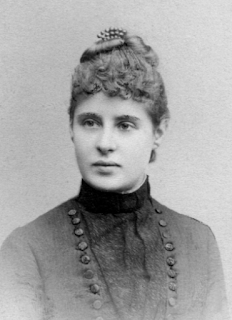Source:
GMZ Tsarskoe Selo
"One of Empress Alexandra's personal rooms in the East Wing of the Alexander Palace, the Palisander Drawing Room was originally conceived as a 'reception sitting room' and a music salon, with a small grand piano and lots of pieces of comfortable furniture for guests.
Known as the Blue Drawing Room in the mid-19th century, it was one of the former private rooms of Grand Duchess Maria, Emperor Alexander II's daughter. Outdated and slightly dilapidated by the 1890s, the interior was renovated in 1895-96 by the architect Robert Melzer, co-owner and head of the artistic department of the Melzer Furniture Trading House in St Petersburg. The Art Nouveau or Siegfried Bing's style, which became a new art phenomenon after the Exposition Universelle of 1889 in Paris, was chosen as the renovation style.
Prior to the renovation, a selection of French fabric samples for walls, furniture upholstery and curtains were presented for consideration by Nicholas II and Alexandra. On 24 May 1895, Nicholas recorded in his diary, 'After breakfast, we chose materials and carpets for our rooms in the Alexander Palace.' A month later, on 24 June 1895, the terms of the contract for the renovation of the former 'reception sitting room' and the supply of French upholstery fabrics and trimmings were entered into the order book of Melzer's company.
The renovated interior was named Palisander Drawing Room. The doors were made of palisander (rosewood). The fireplace and the lower part of the walls lined with yellowish French fabric, were faced with polished palisander panels. Throughout the interior were palisander furniture pieces, some of them with oak intarsia decoration.
Over time, the room was embellished with numerous items according to the tastes and interests of members of the imperial family. On the mantelpiece, Art Nouveau clocks co-existed with Royal Danish Porcelain. Works of Russian and foreign artists decorated the walls. Many items were reminders of the empress' homeland, Darmstadt and the Hesse Landgrave. Such was a large landscape by Eugen Bracht with a view of Schloss Romrod, the ancestral castle of her family. Watercolours with views of Darmstadt and its environs were inserted into a wide screen. The shelves of palisander panels were adorned with various objects, some of them made by members of the imperial family, and numerous framed photographs.
During their first years in the Alexander Palace, Nicholas and Alexandra often spent time in solitude in this room, which also served as the preferred place for breakfast and lunch for the entire family. Close relatives and distinguished guests were often invited to informal dinners with the imperial family in this room.
The decor and furnishings of this interior were lost during the Second World War. In 2002, before the 300th anniversary of St Petersburg, the Alexander Palace was presented with an exact copy of the Wilton carpet that once decorated the Palisander Drawing Room. Mr Larry Hokanson, a U.S. carpet designer, re-created the colour and pattern, based on the historical sample preserved in our Museum's collection.
In 2018–20, Russian craftsmen re-created the palisander finish for the interior. The wood panels and fireplace cladding were made at the Stavros company in St Petersburg. Fabrics and trimmings for the walls and curtains were re-created at the Rubelli manufactory in Italy and the Re Kon Art company in Poland, thanks to historical photographs and samples preserved in the collections of Tsarskoe Selo and Pavlovsk. The fabric for the upper part of the fireplace was provided by the Alpina company.
Now restoration specialists of the Tsarskoselskaya Amber Workshop are working on pieces of the furniture set for the Palisander Drawing Room."
Enable GingerCannot connect to Ginger Check your internet connection
or reload the browserDisable in this text fieldEditEdit in GingerEdit in Ginger













































